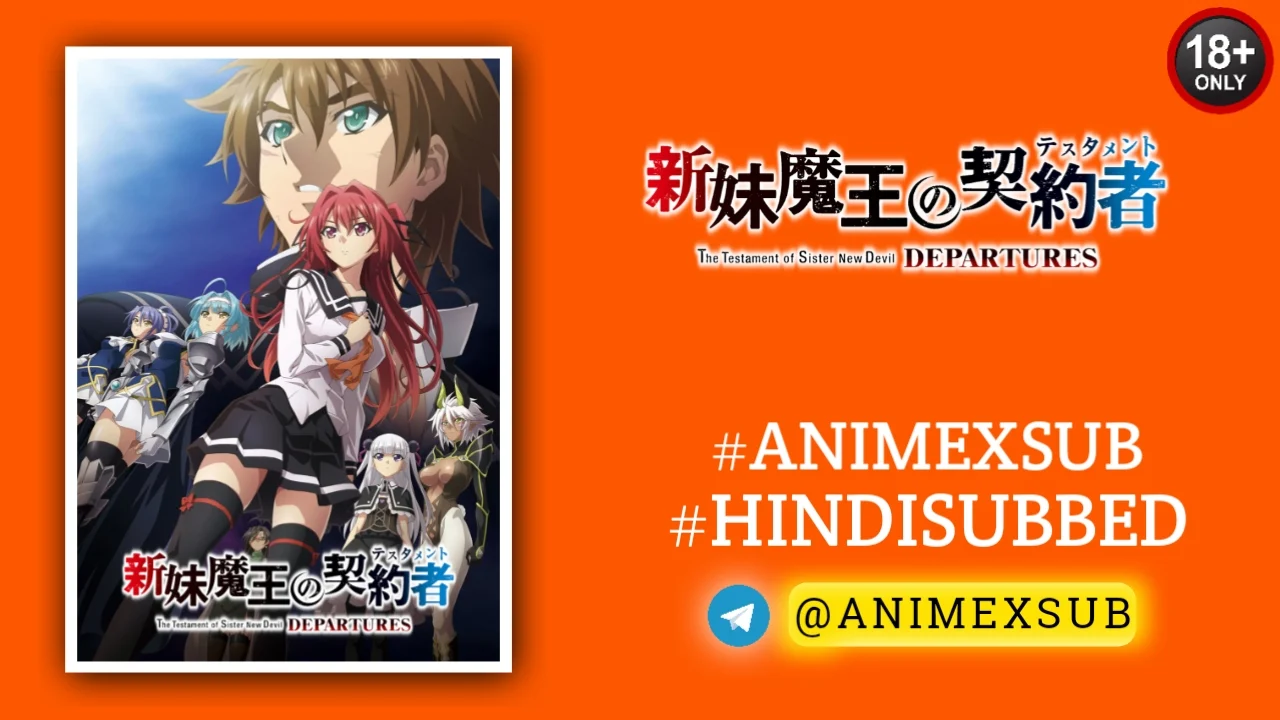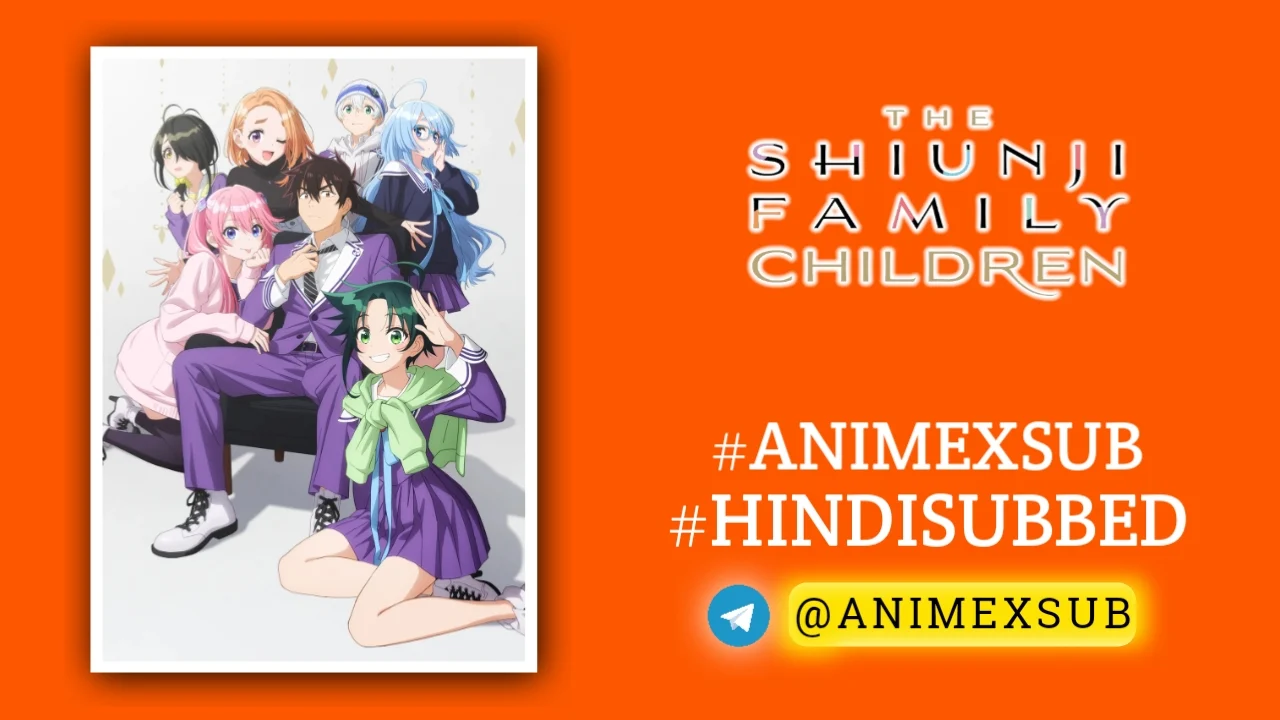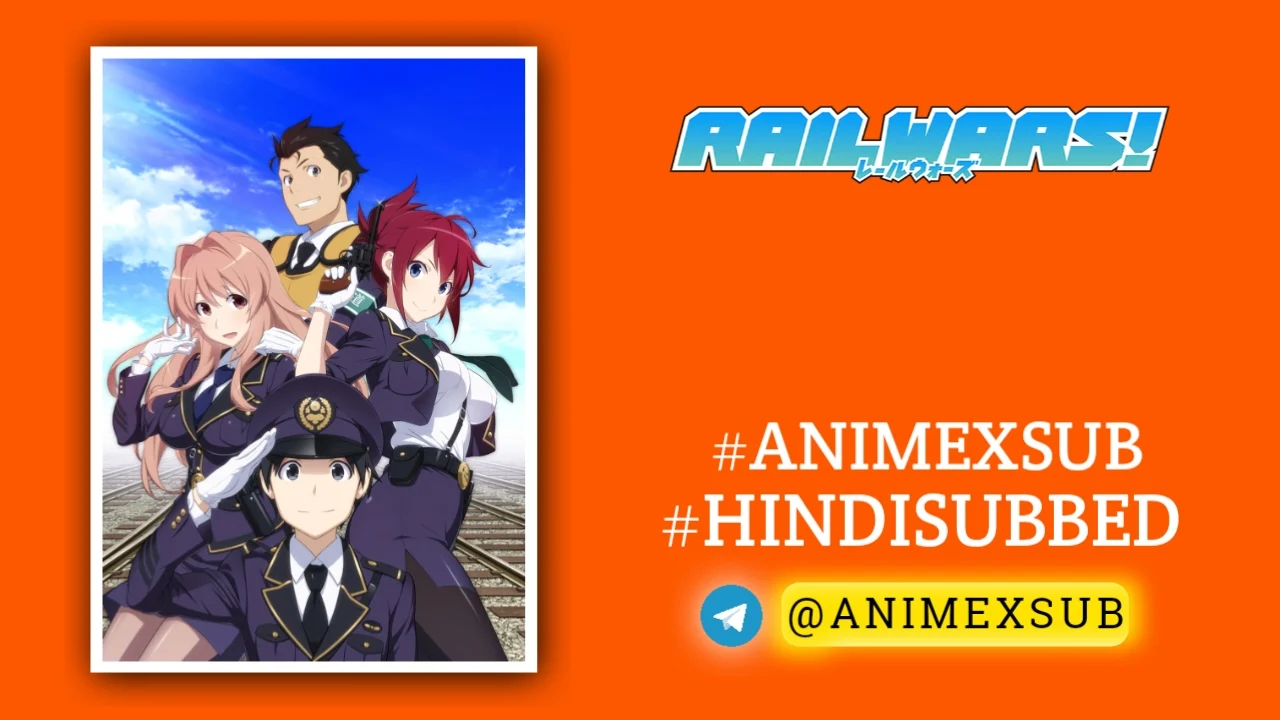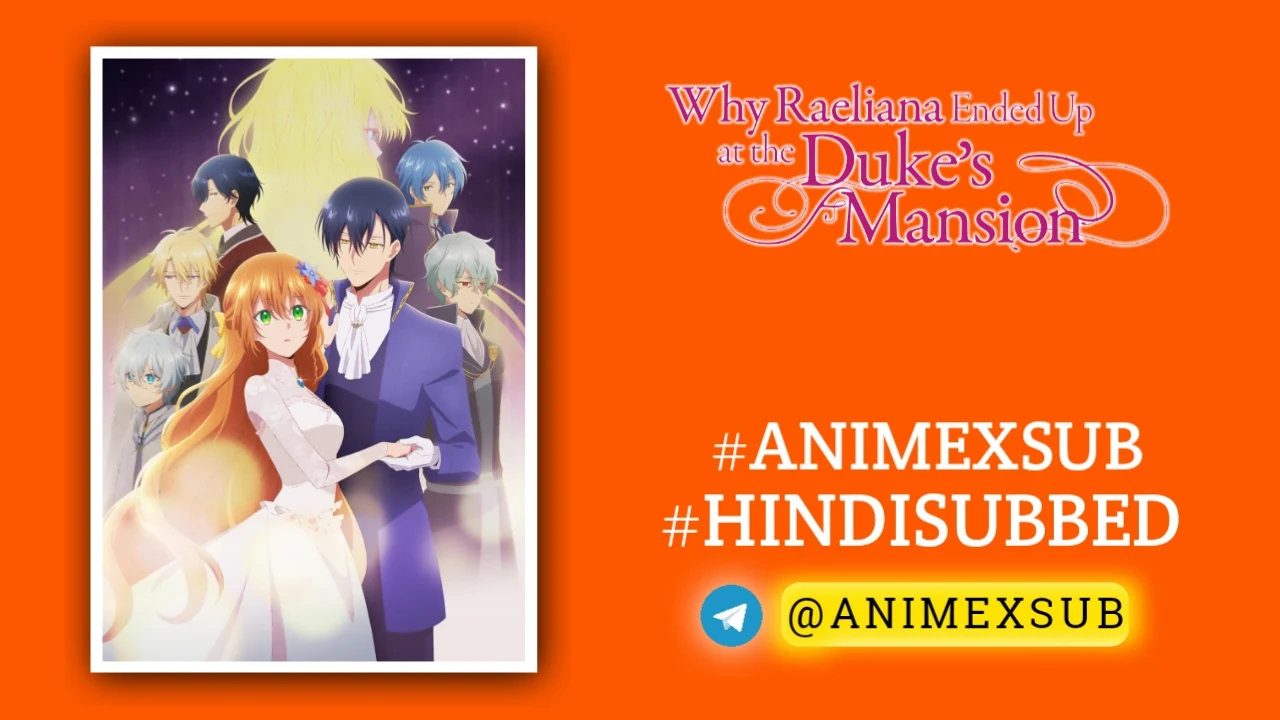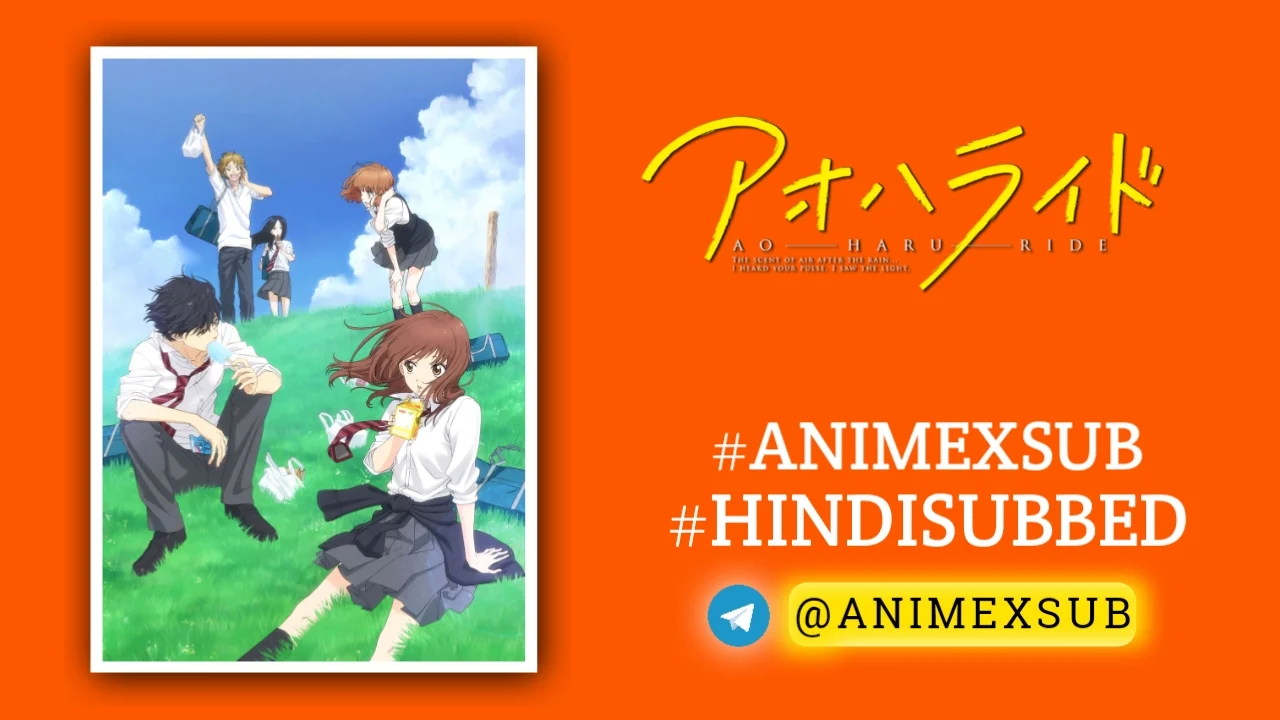
Blue Spring Ride Season 1 Hindi Subbed [12/12] + [1/1] Ova| Ao Haru Ride hindi sub!!

Ao Haru Ride
Blue Spring RideSynopsis
Yoshioka Futaba has a few reasons why she wants to "reset" her image & life as a new high school student. Because she's cute, she was ostracized by her female friends in junior high, and because of a misunderstanding, she couldn't get her feeling across to the one boy she has ever liked, Tanaka-kun. Now in high school, she is determined to be as unladylike as possible so that her friends won't be jealous of her. While living her life this way contentedly, she meets Tanaka-kun again, but he now goes under the name of Mabuchi Kou. He tells her that he felt the same way as she did when they were younger, but now things can never be the same again. Will Futaba be able to continue her love that never even started from three years ago?
Watch Trailer
Characters
Blue Spring Ride Season 1: A Heartfelt Journey of Love and Self-Discovery
By LORD HAK, Admin of Anime X Sub
In the vast ocean of shoujo anime, few series capture the raw, tender essence of youth as beautifully as Blue Spring Ride (also known as Ao Haru Ride) Season 1. Released in 2014 and adapted from Io Sakisaka’s beloved manga, this 12-episode masterpiece by Production I.G is a poignant exploration of first love, personal growth, and the bittersweet complexities of adolescence. With its compelling characters, evocative storytelling, and stunning visuals, Blue Spring Ride Season 1 stands as one of the most emotionally resonant anime of its genre, earning its place as a timeless classic. Here’s why this season is nothing short of extraordinary.
A Story That Tugs at the Heartstrings
At its core, Blue Spring Ride is a story about reconnection and rediscovery. The series follows Futaba Yoshioka, a high school girl who has reinvented herself to avoid the social ostracism she faced in middle school for being “too cute” and popular with boys. Her carefully crafted, boisterous persona hides a vulnerable heart still tethered to her first love, Kou Tanaka, a gentle boy who abruptly transferred schools before she could confess her feelings. Three years later, Kou reappears in her life as Kou Mabuchi, now taller, cooler, and emotionally distant, carrying the weight of personal tragedies that have changed him.
The narrative weaves a delicate tapestry of their rekindled connection, exploring whether love can bloom anew amidst the scars of time and change. Futaba’s journey is not just about romance but about reclaiming her authentic self, learning to embrace her vulnerabilities, and navigating the messy dynamics of friendship and rivalry. The series captures the universal ache of adolescence—those fleeting moments of joy, confusion, and heartache that define youth.
Unforgettable Characters That Feel Like Friends
What elevates Blue Spring Ride above typical shoujo fare is its richly developed cast, each bringing depth and relatability to the story. Futaba Yoshioka is a standout protagonist—flawed, relatable, and inspiring. Her struggle to balance her desire for acceptance with her true identity resonates deeply, making her growth arc profoundly satisfying. Voiced with nuance by Maaya Uchida, Futaba’s emotional highs and lows feel authentic, from her awkward attempts to reconnect with Kou to her quiet moments of self-reflection.
Kou Mabuchi, voiced by Yuki Kaji, is equally compelling as the enigmatic male lead. His transformation from the warm, kind-hearted Tanaka to the guarded, aloof Mabuchi is heartbreaking, yet his subtle gestures—a fleeting smile, a protective glance—hint at the boy Futaba once knew. Kou’s internal conflict, shaped by loss and guilt, adds layers to his character, making him more than just a brooding love interest. Their chemistry is electric, a slow-burn romance that captures the push-and-pull of unspoken feelings.
The supporting cast shines just as brightly. Yuuri Makita (Ai Kayano), Futaba’s soft-spoken friend with her own unrequited crush, embodies quiet strength and selflessness. Shuuko Murao (Mikako Komatsu), a reserved girl with a secret love for Kou’s older brother, adds emotional complexity to the group dynamic. Aya Kominato (KENN), the energetic and loyal friend, brings levity and warmth, while Youichi Tanaka (Daisuke Hirakawa), Kou’s brother, offers mature perspective. Together, they form an “ideal friendship group” that feels genuine, their banter and support grounding the story in a sense of camaraderie.
Visuals and Music That Amplify Emotion
Blue Spring Ride is a visual feast, with Production I.G delivering expressive character designs and vibrant animation that mirror the story’s emotional tone. The art style is inviting, with soft pastels and dynamic lighting that enhance the mood—think cherry blossoms fluttering in a spring breeze or rain-soaked scenes that echo the characters’ turmoil. Subtle gestures, like Futaba’s nervous fidgeting or Kou’s averted gaze, are animated with care, making every moment feel alive.
The soundtrack is equally enchanting, amplifying the series’ emotional depth. The opening theme, “Sekai wa Koi ni Ochiteiru” by CHiCO with HoneyWorks, is an upbeat yet wistful anthem that perfectly captures the thrill of young love. The ending theme, “Blue” by Fujifabric, is hauntingly melancholic, lingering long after each episode ends. Chelsy’s insert song “I Will” adds a tender touch to key moments, making the music an integral part of the storytelling.
Themes That Resonate Across Time
Blue Spring Ride excels at weaving universal themes into its narrative. It’s a story about self-discovery, as Futaba learns to embrace her true self rather than conform to others’ expectations. It’s about the fragility of first love, capturing the joy and pain of feelings that are both fleeting and formative. The series also explores grief, communication, and the courage to move forward, particularly through Kou’s struggle to reconcile his past with his present. These themes, rooted in Io Sakisaka’s vision of “riding on youth,” make the series relatable to anyone who’s ever navigated the turbulent waters of growing up.
The show doesn’t shy away from the messiness of relationships. Futaba and Kou’s romance is fraught with misunderstandings and unspoken truths, yet it feels authentic because of its imperfections. The series also highlights the importance of friendship, with the group’s efforts to revive their school’s festival symbolizing their collective growth and unity. These moments of connection, big and small, give the story its heart.
A Few Flaws, But Still Near-Perfect
No series is without its shortcomings, and Blue Spring Ride Season 1 has minor ones. Some viewers may find the pacing uneven, with certain episodes lingering on emotional beats longer than necessary. The ending, while emotionally impactful, feels incomplete due to the lack of a second season, leaving fans craving resolution (the manga, thankfully, continues the story). Certain plot points lean into familiar shoujo tropes, like love triangles and miscommunications, but the series’ strong character development and sincerity keep these from feeling stale.
Why It’s the Best Shoujo Anime of Its Kind
Blue Spring Ride Season 1 is a triumph because it balances heartwarming romance with profound character growth, all wrapped in a visually and musically stunning package. It captures the essence of youth—the fleeting moments of joy, the sting of heartbreak, and the courage to keep moving forward. Futaba and Kou’s story feels like a love letter to anyone who’s ever dared to love, lost, and tried again.
The series’ cultural impact is undeniable. It was critically acclaimed in Japan, ranked among the top female-oriented manga of 2014, and resonated with audiences worldwide for its relatable characters and emotional depth. Its availability on platforms like Crunchyroll and Rakuten Viki has introduced it to new generations, cementing its status as a shoujo staple.
Final Verdict: A Must-Watch Masterpiece
Blue Spring Ride Season 1 is more than an anime—it’s an experience that lingers in your heart long after the credits roll. With its unforgettable characters, heartfelt storytelling, and breathtaking artistry, it’s a love story that transcends the screen, reminding us of the beauty and pain of growing up. Whether you’re a shoujo veteran or a newcomer, this series deserves a spot on your watchlist. Binge it in a day, let it make your heart flutter, and maybe, just maybe, pick up the manga to continue Futaba and Kou’s journey. Rating: 9/10—a near-perfect ride through the blue spring of youth.
*Watch *Blue Spring Ride* Season 1 on Crunchyroll, Rakuten Viki, or Google Play, and let yourself fall in love all over again.*
Note: This article avoids spoilers beyond the general premise to preserve the emotional impact for new viewers. For those craving more, the manga offers a complete story, and the 2023 live-action drama adaptation provides a fresh take on this timeless tale.
Support Our Anime Community!
Love watching the latest anime? Help us keep uploading new episodes by join telegram channel ❤️
Join Now!








